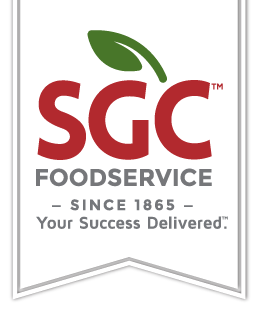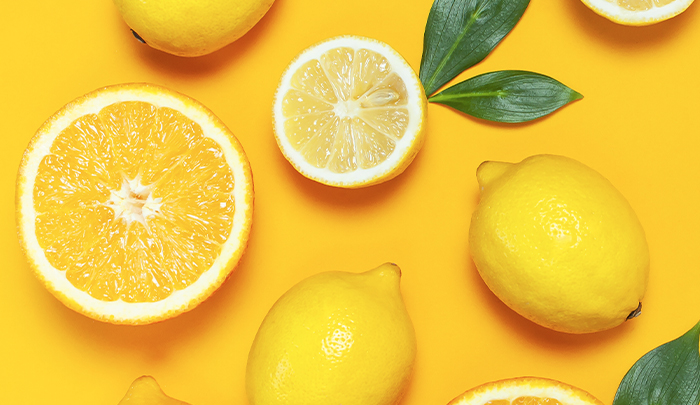Sour sells. In a food world where sweet is the default answer, consumers are hungry for the alternative. As palates become more sophisticated and global flavors are increasingly part of the standard American menu, operators can meet the rising demand for tart and sour flavors by taking ques from other countries. Lemon and vinegar have always been a universal unifier. Coast to coast, country to country, chef’s kitchens around the world have always depended on sour elements to enliven dishes.
Sour foods stimulate digestion and help the body break down fats. In Chinese medicine, a desire for sour foods is said to indicate an imbalance in the gut. Whether there is an underlying nutritional reason or just a flavor craving, the demand for sour foods has spread from fine dining to quick service and fast food menus nationwide.
From ingredients to garnishes, appetizers to desserts, there are no shortage of opportunities to give diners the pucker-up-and-enjoy experience they are seeking.
Try a few tart tweaks and watch sales increases follow—
OLIVE OIL
Olive oil as a dessert flavor grew 16% from 2015 to 2017. Turn to Italian cookbooks for torte, cake, and cookie recipes that incorporate typically savory ingredients like olive oil, rosemary, and basil. Combined with citrus flavors, olive oil can produce meal finales that surprise customers into saying yes to dessert.
DARK CHOCOLATE
Bitter by way of dark chocolate is an easy way to deliver tart. Trading dark chocolate for milk chocolate will deliver a more complex, tart, and sophisticated flavor.
PICKLES
Pickles are the quintessential sour compliment to any lunchtime meal. Go beyond the cucumber and quick pickle radishes, carrots, red onions, green beans, and any other vegetable that happens to be in arms reach of the mason jar. The basic formula is simple and can be kicked up with different vinegars or additional spices. Just bring 2 cups of apple cider vinegar (SGC# 128210), ½ cup sugar (SGC# 051771), 2 Tablespoons kosher salt (SGC# 052100), 1 Tablespoon black peppercorns (SGC# 169553), 1 Tablespoon mustard seeds (SGC# 196325) to a boil, stirring occasionally. Reduce heat and simmer for 10 minutes. Place 1 ½ pounds of sliced vegetables in a heatproof resealable container or jar (SGC# 752802) and cover with the hot brining liquid. Cool to room temp, and cover and chill for at least 2 hours.
FRUIT & VEGETABLES
Got fruit and vegetable scraps in the kitchen? Turn them into tart condiments by making house made vinegars out of scraps, water, and sugar. Fermentation can turn food waste into a flavorful condiment that will infuse salads and main dishes with unique flavor. Add food scraps to water, add sugar, cover, and open and stir a few times a day. After a week, strain and enjoy.
LEMON & PASSION FRUIT
Lemon and passion fruit are the two of the top growing flavors according to Mintel Menu Insights. Incorporate them into curds, tarts, puddings, ice creams, dressings and sauces for possibilities within all menu categories.
COFFEE
Coffee is America’s most bitter friend. Proof that our tastes have long been conditioned to accept flavors outside of sweet, coffee can be used outside of the mug to deliver more tart options. From coffee rubs on meat to coffee flavored granitas for dessert, the caffeine bean can deliver exactly the flavor hit customers crave.
SOUTH OF THE BORDER
Visit any restaurant in Mexico and you’re likely to find a dish of limes on the table. The reason? Limes are a way to cut the heaviness of a dish and add complexity and contrast to existing flavors. In the same way that drinks are garnished, try garnishing entrees with sour elements.
SOUTHEAST ASIA
Southeast Asian food contains a wide range of bitter and sour flavors. Experiment with fish sauce in place of salt or adapt the Thai principle of combining sweet, sour, salty and bitter in one dish.
BARBECUE
Barbecue has always been reliant on the sour elements. Not only does vinegar help break down the meat during slow cooking, it is also a key component of the sauces and coleslaws that accompany a traditional BBQ meal. To amplify the sour factor even more, swap sweet tomato-based BBQ sauce for a tangier mustard-based sauce.
DRINK UP
Drink up the possibilities that come from meal accompanying beverages. Sour drinks have long been associated with refreshment because they stimulate salivation and prevent dehydration. Offering lemonades, limeades, shrubs, kombucha, and drinking vinegars can take an otherwise unchanged menu into fresh territory. Lemon water—literally nothing more than water with freshly squeezed lemon—is having a moment, as health influencers and celebrities celebrate the benefits of the drink. From balancing pH levels to boosting electrolytes, lemon water can deliver countless benefits. Make up a quick table tent hyping the health benefits of hot lemon water and begin offering mugs alongside the traditional coffee and tea. Low cost, high impact and just one more way to give customers the sour they’re seeking.

